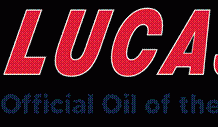The statistics are staggering. In the United States alone, it is estimated that one in eight women will develop invasive breast cancer in their lifetime. Across the country, the month of October has become a symbol of hope and a time to take special pause to raise awareness and make a difference. This is a job that extends beyond the weeks of October however; it is one that will not be done until we see a decreasing number of sufferers and increasing number of survivors.
For those who do not already know this, my wife, Karen, is a seven year breast cancer survivor. Her mother, sister and niece have also battled this ruthless disease as well. From our experience, we learned that early detection is the key. That is something we hear a lot though so I want to take the time to talk about what early detection really is.
 The best screening tool used today is mammography. By using x-rays, these images are used to find early signs of breast cancer such as a dense mass or clusters of calcium. The American Cancer Society recommends that women at average risk get a mammogram every year starting at age 40.
The best screening tool used today is mammography. By using x-rays, these images are used to find early signs of breast cancer such as a dense mass or clusters of calcium. The American Cancer Society recommends that women at average risk get a mammogram every year starting at age 40.
There is also genetic testing, known as BRACAnalysis, which can let you know your risk for hereditary breast and ovarian cancer by identifying a mutation in the BRCA gene. Factors, such as a strong family history of breast cancer and/or a mutation of the BRCA1 or BRCA2 gene, cause a woman to be considered ‘high risk.’ When that is the case, mammograms are not only recommended more often but also starting at a younger age- sometimes younger than 25.
Due to the prevalence in our family, my wife went through the genetic testing to see if our daughters may also be in line for breast cancer. Fortunately, the results have shown that the form Karen had was not hereditary but I am still very vigilant that our daughters continue to get routine testing because when breast cancer is detected early, in the localized stage, the 5-year survival rate is 98 percent.
This disease does not only impact women however. The American Cancer Society estimates that in the year 2013, 2,240 men will be diagnosed with a new case of invasive breast cancer in the United States. While men are not encouraged to get regular mammograms, they are encouraged not to ignore breast lumps and see a doctor when in doubt. Early detection is the key for both women and men.
I understand however that not everyone can afford to be as attentive as this disease often requires. The good news is, throughout the country, low-cost or free mammograms are available to those who need it the most. Komen Affiliates fund breast cancer education, screening and treatment projects in their communities. By calling 1-877-GO-KOMEN (1-877-465-6636) you can find these low-cost options in our area. Many imaging centers are also currently offering mammograms at reduced rates in honor of Breast Cancer Awareness Month. To find a certified mammography center you can visit the FDA website at www.fda.gov.
I consider myself very blessed that my wife and many other people have been fortunate enough to beat this. However, I know that this is not always the case. As we continue to look for ways to battle breast cancer, I encourage you to get involved in raising awareness on this issue in any way possible. If you are able, donations can be made at any time to the National Breast Cancer Foundation. There are also opportunities to get involved by simply volunteering your time. For more information, please visit http://www.nationalbreastcancer.org/breast-cancer-awareness-month. Together, we can work to have a common goal to eradicate breast cancer.



